I’ve been lucky enough to be have had associations with St Aubyn’s Church for a number of years and to know it in two quite different incarnations.
I was first became associated with the building when it became clear in 2009 that it would become the new Devonport Library. I was fortunate to see the building during its transformation and now I spend time working at this fantastic facility offered to the people of Devonport and Plymouth.
In my view this building forms a perfection – a combination of church and library!
Prior to the opening of the new Library in 2011 I researched something of the history of the Church. What follows is taken from my notes of that time.
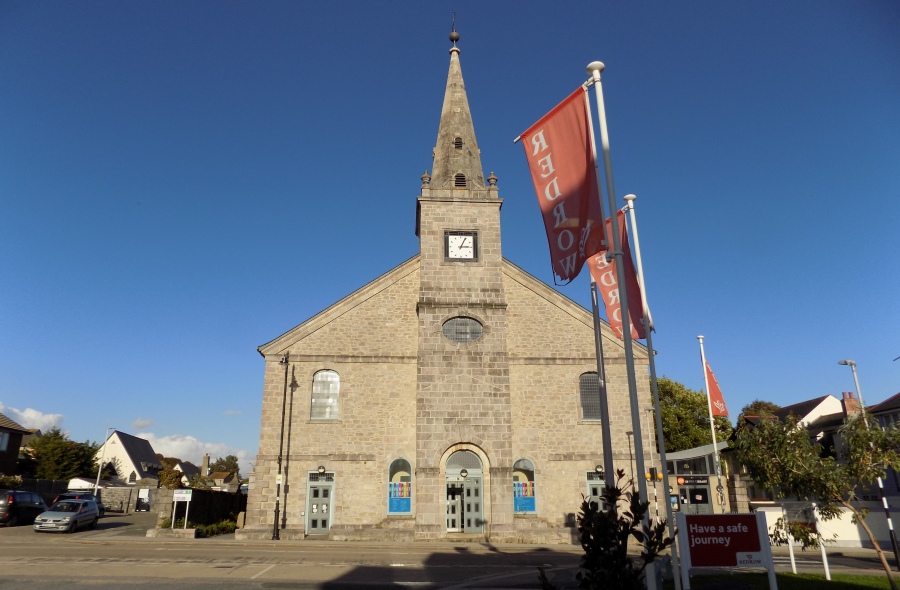
St Aubyn’s Church was erected as a Proprietary Chapel under the authority of an Act of Parliament passed in 1768. The costs of passing the Act and completing the chapel were to be raised from “the sale and disposition of the pews or seats to be erected and set up in the said chapel” – the final building cost amounted to £7000.
St Aubyn’s Chapel was consecrated by the Lord Bishop of Exeter on 17 September 1771. The sermon given in the Chapel at its consecration was delivered by the Vicar of Stoke Damerel, the Rev. Edward Bridges Blackett
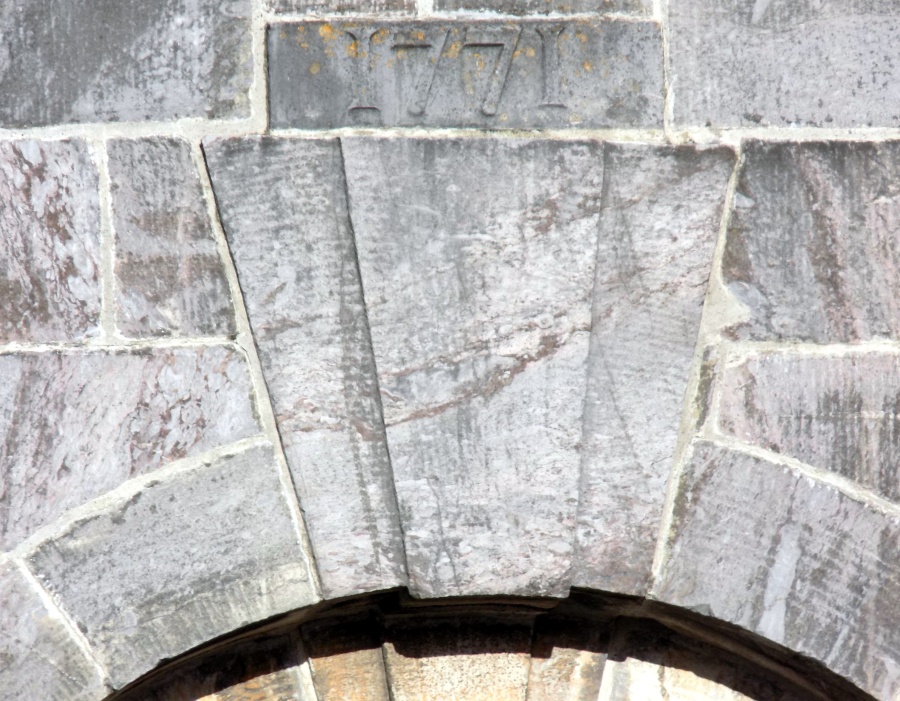
The affairs of St Aubyn’s Chapel were overseen by a board of trustees. The trustees were responsible for the day to day running of the Chapel and are named amongst the subscribers to the first organ placed therein in August 1772. The names of the first trustees were Sir John St Aubyn, Rev. Edward Bridges Blackett, Thomas Mangles, Dionysius Williams, George Wills, Richard Nelson, William Billing, John Croad, John Spurril, Nicholas May, Timothy Bayley, William Stephens, Benjamin Parham, Thomas Thorn. The curate of St Aubyn’s Chapel was Rev. Amos Crimes.
The earliest accurate description of St Aubyn’s Chapel is found in Hoxland’s ‘Plymouth Dock Guide’ published at Plymouth Dock [the pre-1824 name for Devonport] in 1799.
This Chapel was built under the authority of an Act of Parliament about the year of 1771, as appears from the date on its front. It has a gallery on the north side, and part of the south with the west end, where there is a small Organ. It has Divine Service regularly twice every Sunday, except Easter Day, when its Minister pays homage of duty to and at the Parish Church. Every Wednesday evening also there is a Sermon and prayers on Friday evenings. Christenings, burials and all other occasional duties its Minister is excluded from; which are entirely in the province of the Parish Church, and performed by the Minister or his Curate. The exterior of the Chapel is in the style of modern architecture on which we shall not enlarge. It has a dial plate to the west to show the time to the inhabitants; and on its small square tower which contains but one bell, a neat and plain octagonal spire is erected, surmounted by a vane to discover the current of the wind. It is surrounded by a wall and balustrades; and has three entrances all at the west end, to the several Iles [aisles] and to the galleries. The present Curate is the Rev. Jonathan Williams.
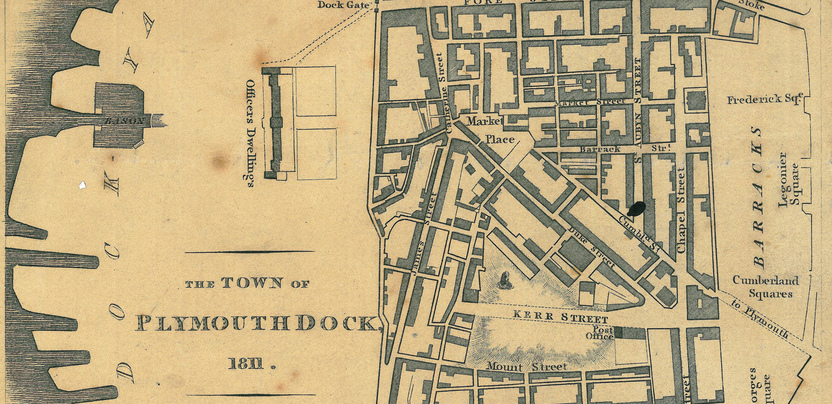
The Plymouth, Stonehouse and Devonport Directory of 1830 records further information
St Aubyn’s Chapel is a building of substantial and plain appearance, with an octagonal spire, rising above a Doric portico. This chapel was erected by subscription in 1771, an Act of Parliament having been obtained for the purpose. The interior is neatly fitted with galleries on both sides and at the western end, supported by stone columns. It contains a good organ, has a choir of singers, and is attended by a highly respectable congregation. A very handsome pew is set apart for strangers. Incumbent – Rev. J. Jacob, LLD; Clerk – T. Badge; Organist – T. Birkhead – Chapel Wardens – John Gilbert, Richard Snow.
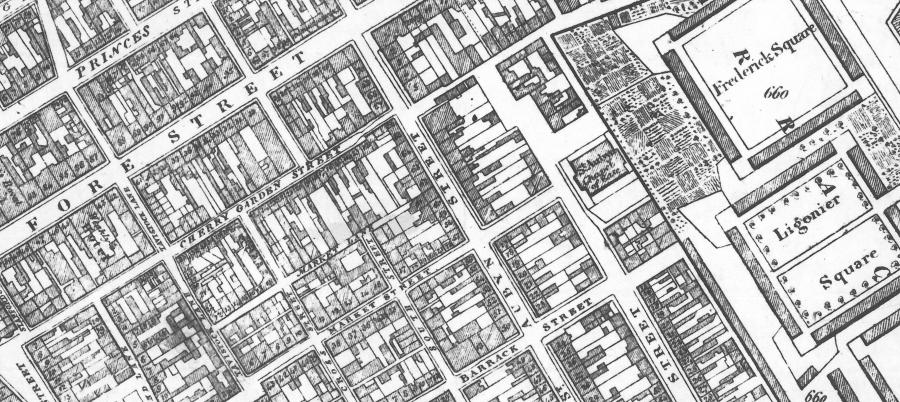
On 10 June 1840 James Davidson, author of “Church notes on the South of Devon” visited St Aubyn’s Chapel and recorded the following
A large stone building consisting of a nave and side aisles with Doric columns and sashed windows with a spire at the western end – erected in 1771 – no baptisms or burials take place here and there are no monumental inscriptions.
A new and improved Organ was “erected by the offerings of the trustees, proprietors and congregation” in 1866. This refers to the organ still in place in the Church in 2009. After the restoration and transformation of the Church the Organ was moved to its original home – the west gallery – however the inner workings of the Organ were removed – leaving the Organ Case we see today.
The tower contains one bell, cast in 1873, and inscribed: CAST BY JOHN WARNER & SONS LONDON 1873. It is in the note of F# and weighs 12 1/2 cwt. It is unclear whether or not this replacedan earlier bell, although this would seem logical.
There is a full description of St Aubyn’s Chapel available in the 1878 Devon Directory as follows
St Aubyn’s Chapel, in Chapel Street, is a large and handsome building, which was erected under the powers of an Act of Parliament in 1771 at the cost of £7000, raised by subscription. It forms an oblong square, and contains three aisles, with galleries at the sides and west end. The entrance is beneath a well designed portico, above which rises an octagonal spire. The interior is neatly fitted up, and most of the pews are private property. Various improvements have been effected during the last 25 years, including the building of a new organ, the addition of a new vestry and the insertion of stained glass windows, the whole at a cost of £1200, raised by subscription. The benefice is a perpetual curacy, valued at £200 in the patronage of the rector of Stoke Damerel, and incumbency of the Rev. Pitt Johnson, B.A.
St Aubyn’s Chapel was assigned its own parish on 5 December 1882 and became known as St Aubyn’s Parish Church. The parish had been formed out of the parishes of Stoke Damerel and St Paul’s, Devonport.
On 17 December 1884 the foundation stone for a new chancel was laid by the Rev. W. St Aubyn, the Rector of Stoke Damerel. The land upon which the chancel was to be built belonged to Raglan Barracks and therefore permission needed to be granted from the War Office to use part of their land. A Western Morning News article of 18 December 1884 reported that
The War office authorities have kindly allowed the chancel to be built protruding into the barrack ground, the space occupied being 27ft by 40ft. It is proposed to take out the present east end of the church and rebuilt it 22ft eastward. The side walls and the roof will, of course, have to be entirely new work. The chancel will be built from plans prepared by J. Piers St Aubyn of London, and will be carried out under the direction of Mr H Luff, the manor office architect. The builder is Mr Westaway of Cumberland Lawn.
The completed chancel was consecrated by the Lord Bishop of Exeter on the 18 July 1885. The total cost for the chancel was £863.
Alongside the erection of the chancel, part of the north gallery was removed to make way for the organ which had formerly stood in the west gallery.
The portico outside the western entrance of St Aubyn’s Church was removed in 1896 to enable Chapel Street to be widened for the placing of tramlines. The outline of this portico can still be seen on the facade of the building.
In February 1926 a faculty was granted by the Diocese of Exeter to erect a stained glass window in the east window of the chancel to act as a war memorial.
The faculty recorded that the window was to have the following inscription
The East Window is erected by the members of this Church to perpetuate the Signing of Armistice, and in grateful recognition of the sacrifices made by all ranks for the peace of Europe.
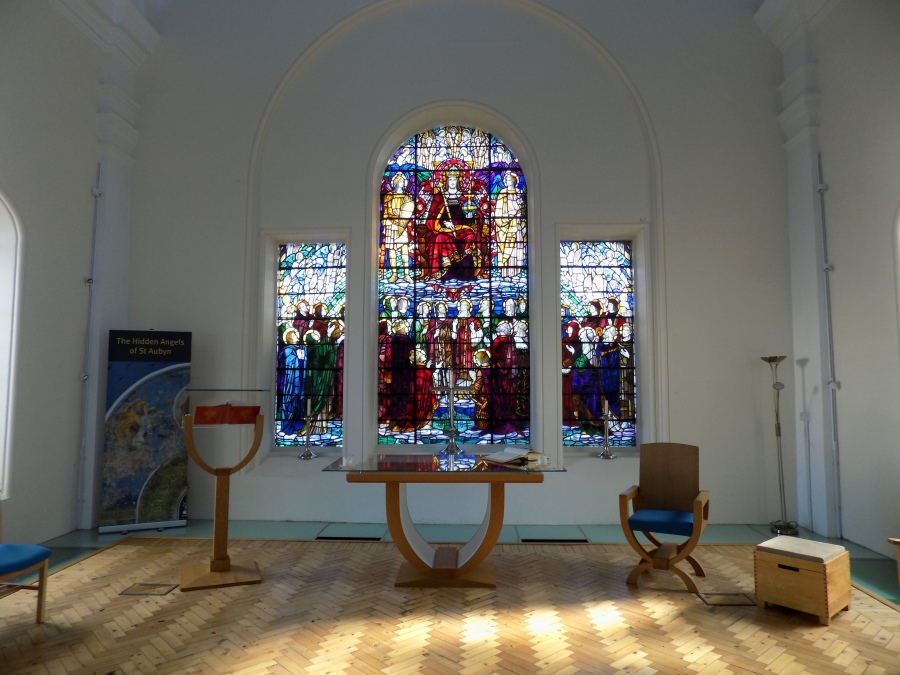
The window was paid for from the Free Will Offering Scheme with donations and cost over £600. The window was unveiled on Ascension Day, 1926.
On 13 November 1930 a newly erected Vestry was consecrated by the Bishop of Exeter.
The church was damaged by enemy action during the Blitz in 1941 and was temporarily closed.
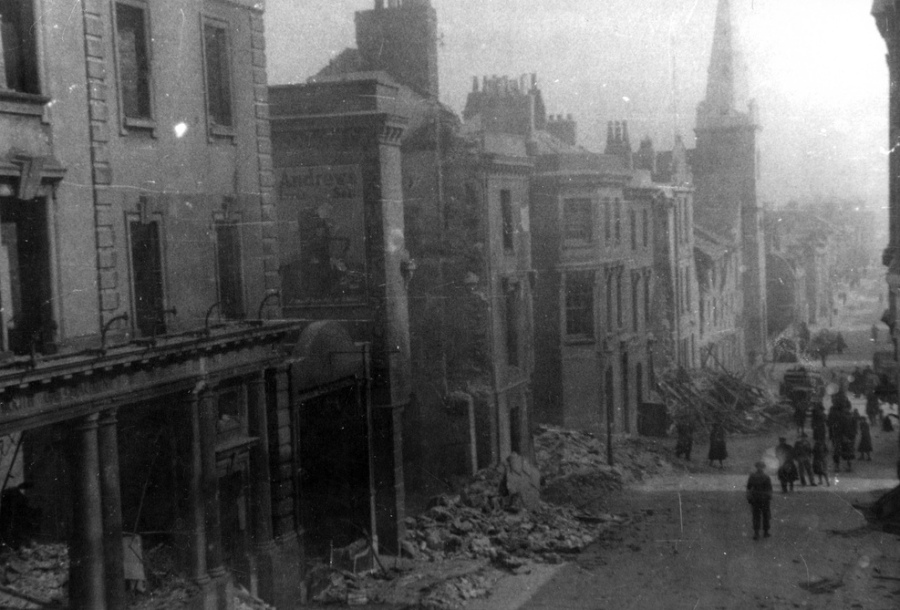
After the demolition of St Mary’s Church on James Street, Devonport in 1959 St Aubyn’s Church was the only remaining Parish Church in Devonport. It had been deemed by the mid 1950s that St Aubyn’s Church was capable of serving the whole community and its religious needs. This was in stark contrast to pre-war church accommodation in Devonport which was then served by a total of six Church of England churches; St Aubyn’s, St James the Great, St John’s, St Mary’s, St Paul’s and St Stephen’s. All of these churches had been either been destroyed during the bombing raids of World War Two or had been demolished by 1960.
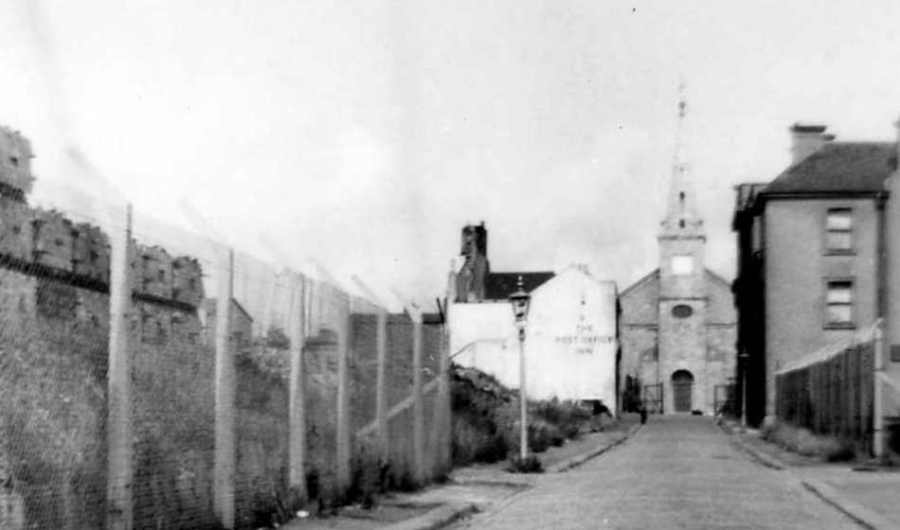
In 2001 the spire of St Aubyn’s Church was restored and was dedicated by the Bishop of Plymouth. The spire had been damaged during the Blitz in 1941 and by the 1960s it had become so dangerous that it was reduced in height on safety grounds. The Devon Historic Churches Trust and English Heritage provided £6000 for the restoration work.
Due to a dwindling congregation alternative uses for St Aubyn’s Church needed to be found to preserve the building for future generations of Devonport residents.
In July 2008 architects Gilmore Hankey Kirke unveiled proposals for the future use of St Aubyn’s Church. An article in The Herald of 15 July 2008 reported that
following repairs to the church, GHK proposes to move Devonport Library – which is located in the Devonport Guildhall at the moment – to the ground floor of St Aubyn’s.
On 3 June 2009 St Aubyn’s Church celebrated its last service before closing to begin the transformation into the new Devonport Library. The final prayer was especially poignant:
God of our beginnings and endings, we celebrate all our memories of St Aubyn’s Church and its long history in Devonport; we ask your blessing on its new life to come with Devonport Library. May the love which is in our hearts be a bond to unite us forever, and may the power of your presence bless all our hopes, and calm all our fears; this we ask for Jesus’ sake. Amen.
An article in The Herald for 4 February 2011 reported that
St Aubyns Church was falling into disrepair before undergoing a £2.2 million transformation, funded by the Devonport Regeneration Community (DRC) Partnership. The Grade II listed Georgian building is now a state of the art library and a worship area for church services.
The newly refurbished and restored Church and St Aubyn Library opened on the 21 January 2011 and was formally opened on 11 February 2011.
It seems that this excerpt from an article reporting the laying of the Foundation Stone for the chancel and printed in the Western Morning News on the 18 December 1884 is as true now as it was then
The building of 1771, however fit it might have been for the wants of worshippers at that time, was not adapted for modern wants. Things had changed since then, and, amongst other things a great change had come over the modes of religious worship…
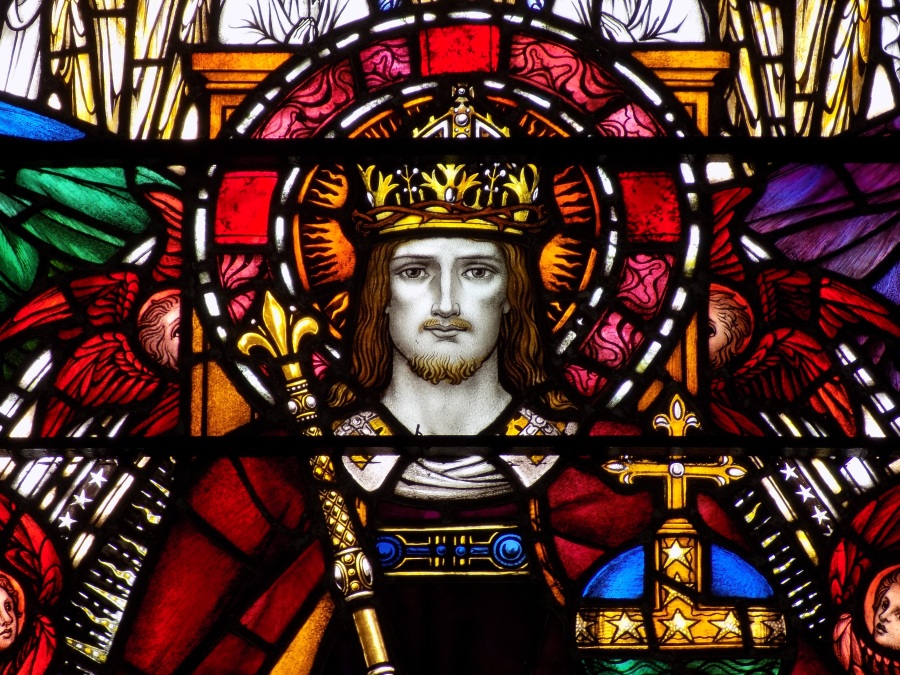
These days I’m very fortunate to work within the building to manage the outstanding Naval History collection owned by Plymouth Libraries. The collection is in its natural home – Devonport – and represents many aspects of the Royal Navy over the last 400 years. It’s a goldmine for naval, local and family history researchers alike and I’d be delighted to see you there!
© Graham Naylor









1 Comment
Comments are closed.